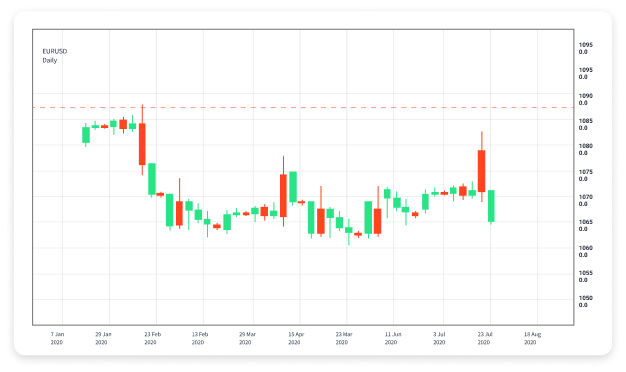
Day trading in Forex, a practice that involves making multiple trades within a single day to capitalize on short-term price movements, has gained immense popularity among investors worldwide. For those interested in profit maximization, understanding the intricacies of this fast-paced market is essential. This guide aims to introduce new traders to the world of day trading while providing valuable insights for seasoned professionals. For reliable resources and trading opportunities, check out day trading in forex Best Cambodian Brokers that cater to different trading styles and preferences.
Understanding Day Trading
Day trading is characterized by the buying and selling of financial instruments within the same trading day, often closing all positions before the market closes. Traders aim to take advantage of small price fluctuations that occur throughout the day, rather than holding investments for the long term. This style of trading requires a firm grasp of market analysis, rapid decision-making skills, and the ability to manage risk effectively.
Advantages of Day Trading in Forex
- High Liquidity: The Forex market is one of the most liquid markets globally, offering traders the opportunity to buy and sell currencies quickly without substantial price changes.
- Flexibility: Day trading allows participants to work from anywhere with an internet connection, providing a level of geographical independence.
- Potential for High Returns: Due to the leverage available in Forex trading, even small price movements can lead to substantial profits.
- No Overnight Risk: Day traders close all positions before market close, thus avoiding exposure to overnight news and market volatility that can adversely affect positions.
Essential Strategies for Day Trading in Forex
Successful day traders employ specific strategies that enable them to make informed trading decisions. Here are some of the most effective day trading strategies used in the Forex market:
1. Scalping

Scalping is one of the most popular day trading strategies that focuses on making numerous small trades throughout the day. Scalpers aim to capitalize on minor price changes and often hold positions for just a few seconds or minutes. This method requires highly developed technical analysis skills and the ability to execute trades rapidly.
2. Momentum Trading
This strategy involves trading based on the strength of recent price trends. Traders using this approach look for stocks that are moving significantly in one direction and attempt to profit from continued momentum. It’s essential to monitor news and other market conditions that may influence price movements.
3. Breakout Trading
Breakout trading involves identifying key levels of support and resistance. Traders anticipate that when the price breaks through these levels, it will continue to move in that direction. This strategy often requires strong technical analysis skills, coupled with a deep understanding of market psychology.
4. Range Trading
This strategy operates under the premise that currency pairs often trade within a predefined range. Traders buy at the support level and sell at the resistance level. Range trading requires patience and the ability to identify when the market is “stuck” within a certain range.
Tools and Indicators for Day Trading
Successful day trading relies heavily on various tools and indicators that assist traders in making informed decisions:
- Charting Software: Advanced charting software provides traders with the tools to analyze price movements and identify trends. Popular software options include MetaTrader, TradingView, and NinjaTrader.
- Technical Indicators: Indicators such as Moving Averages, Relative Strength Index (RSI), and Bollinger Bands help traders assess market trends and make informed trading decisions.
- News Feeds: Staying informed about economic news and events is crucial for day traders. A sudden economic announcement can significantly affect currency prices.
Choosing the Right Broker for Day Trading in Forex
When engaging in day trading, selecting the right brokerage platform is essential. Here are some factors to consider when choosing a Forex broker:
- Regulation: Ensure that the broker is regulated by a reputable authority to guarantee safety and compliance with industry standards.
- Trading Costs: Look at spreads and commission rates, as high trading costs can eat into profits, particularly in day trading, where many small trades are made.
- Trading Platforms: The broker’s platform should be user-friendly, with customizable charts and an array of technical indicators.
- Customer Support: Reliable customer support can provide assistance during critical trading moments. Look for brokers with 24/7 support availability.
Managing Risk in Day Trading
Risk management is a crucial aspect of day trading. Here are some strategies to mitigate risks:
- Set Stop-Loss Orders: Always use stop-loss orders to limit potential losses. Determine a risk percentage for each trade and stick to it.
- Adapt Position Size: Adjust your position size based on market volatility and the specific trade setup. Smaller positions may be appropriate for riskier trades.
- Diversification: Avoid putting all your capital into one trade. Diversifying your trades across different currency pairs can help reduce overall risk.
Final Thoughts
Day trading in Forex can be a thrilling and potentially lucrative endeavor. However, it requires rigorous preparation, a solid understanding of market dynamics, and disciplined risk management. Many day traders find success through continuous education and practice. As you embark on your trading journey, remember to choose reputable brokers and stay informed about market trends. With the right strategies and mindset, you can unlock the potential for consistent profits in the dynamic world of Forex trading.

